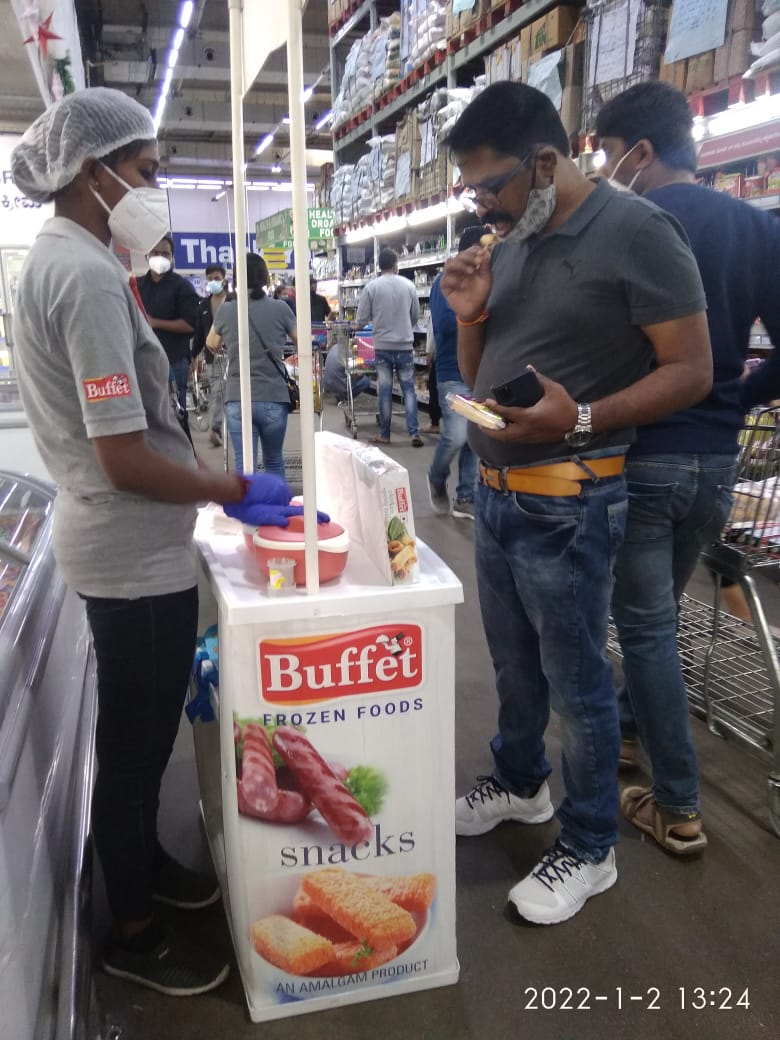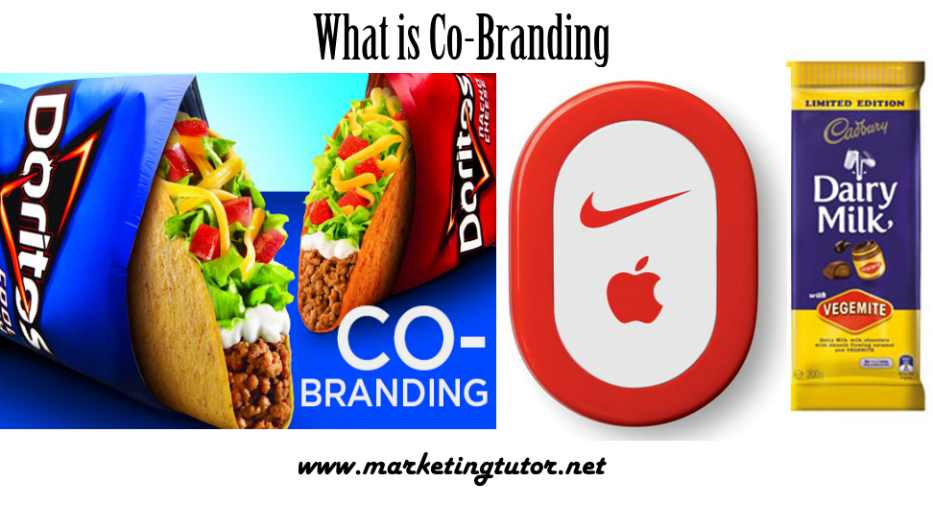How sampling of food products to consumers helps in building Fmcg brands today
How to Build Fmcg brand?
Encourage all clients to hand out product samples at experiential marketing activations (assuming it makes sense for their company, of course).
Why? First of all, it’s effective. A report fromSampling Effectiveness Advisorsshares this statistic:
73% of consumers said they were likely to buy a product after trying it. Only 25% said the same thing about seeing a television commercial.

Product sampling can also help consumers better understand a company’s product and businesses meet their goals. Let’s explore these idea more in depth.
“We’ve been offering samples to our customers from day one, and the results have been quite impressive—we’ve seen an uptick in returning clients purchasing full-sized products that they sampled earlier.”
Product sampling will draw people to your activation

What motivates consumers to visit experiential marketing activations.
The overwhelming majority of respondents – 81% – said they walked up to a company’s display because they wanted a product sample or other free giveaway. From there, the numbers fall off dramatically.
Only 54% were drawn in by a discount or special offer; 49% wanted to learn about the product or service being promoted; and 46% said they liked the brand or thought the activation looked interesting.
What are the main challenges facing FMCG companies today?
It’s hard to argue with the numbers. And it’s hard to argue with something that everyone (especially anyone doing events on college campuses) knows: People like free stuff.
They like free food, free clothing, free drinks, free anything. Giving away product samples at any type of experiential marketing event is the best thing you can do to draw consumers to you.
Product sampling gives customers a taste (or feel, smell, etc.) of your product
If you goal is to help consumers better understand your product, there’s nothing that works better than product sampling. Period. You can tell them your product will make their skin healthier, their mind sharper, their body healthier, their home smell better.
You can show them how it looks and what makes it different from the goods offered by your competitors. You can list the celebrities, doctors or other professionals that have endorsed it.
But until a consumer tries it and has their own experience with it, they won’t know if they like the way it tastes, smells or makes them feel.
That experience, and their ability to use their senses to explore your product, is very important.
Product sampling can be a powerful first step in getting a consumer to try your product for the first time.
It can also be your first step in creating an emotional connection between your company’s product and your target consumer.
That emotional connection is the core of developing loyalty to your brand (more on this later).
Product sampling gets customers thinking about your product

Most people go to the grocery store with a list, or at least a good idea of what they need to buy for lunch, dinner or the weekend’s snacks.
They don’t necessarily go looking for your product. And if they just see your product sitting on a shelf, they probably won’t be motivated to buy it.
But if a real person is standing in the aisle and offers them a sample of your food, or a demonstration of your cleaning product, they’re more likely to stop.
Once they’ve tried the item for themselves, they’re more likely to buy it – even if it’s not on their shopping list.
This is one example of how product sampling gets consumers thinking about your goods or services when they wouldn’t be otherwise.
People are busy. It’s hard to catch their attention, and hard to get them to think outside their bubble.
But by presenting them with something they can’t resist, and something they can experience with their senses, you can do an even better job of getting them to notice you.
This is a good place to mention that anytime you give out product samples, you should make sure you’re getting them to your target audience.
If you’re trying to reach moms with young kids, going to the grocery store during a weekday is probably a good idea. If your target market is college kids, or working professionals, you’re unlikely to catch them at the grocery store during the same times. Try handing out product samples on a weekend, or choose a different venue entirely.

Product sampling helps build customer loyalty
Getting a one-time customer is great. Getting a long-term customer is much better. Many business magazines and other resources say it’s five times more expensive to get a customer than to keep a customer. You want the people who are already buying from you to keep coming back.
We offer single-use sample sizes of our most popular products with every order. People try samples and we see an increase in our reorder value, as about 40% of our customers add an additional product they tried as a sample first.
That’s why companies invest so much in building customer loyalty. Experiential marketing is a big part of the push to secure customers who will buy your products for life and encourage their friends to do the same. Sampling can also be a powerful tool for meeting the same goal.
free samples are normally from products that work well with what they purchased. This increases the chances of those same customers trying the product and purchasing it on their next order.”
Increase customer loyalty

For many direct-to-consumer brands, repeat customers are the biggest revenue drivers. Some 65% of a company’s business comes from existing customers.
So, how does product sampling play a role in customer loyalty? For 95% of customers, trusting a company increases their loyalty to the brand. Free samples play on this. The customer can use, interact, and play around with the product before trusting its worth the retail price.
Plus, 72% of consumers would stay loyal to a cosmetic brand if the retailer sends free samples prior to purchase. To encourage customer loyalty, free samples beat personalized recommendations, user-generated content, and influencer endorsements—three huge marketing activities many retailers prioritize over sample-giving.
If you’re going to build customer loyalty, you need to get people to like you. One way of doing that is giving them something for free. It tends to make them feel like you’re doing them a favor. If they like your product, and they first tried it in an environment where they felt good – in a familiar place with a nice person helping them – they’re more likely to form a positive association with it.
Are you hoping to begin a product sampling program?
Product Sampling Marketing
A study around wine tastings conducted by Cornell University professor Miguel Gomez showed customers who enjoyed a tasting were 93% more likely to spend an extra $10 at the winery. They were also highly likely to buy from the business again in the future.
Do you want to make your existing product sampling program more interesting and engaging for consumers?
Getting potential customers to try your product before they buy is a tried and tested marketing tactic – and one that remains super useful for brands big and small.

Sample marketing plan for fmcg products
When you offer potential customers a freebie, that’s known as a product sample. It’s a marketing tactic, particularly common in the world of fast-moving consumer goods (eg, food and drink), that involves getting a version of your product in people’s hands to achieve a specific goal.
That might simply be to get the word out about your brand, encourage sales of a new product, or to test out the popularity of different product options.
How will you position the brand of an FMCG products?
Product sampling can take place in supermarkets and stores, in tactical locations, or as part of collaborations with other brands. Increasingly, brands are distributing samples digitally via their own or other websites, but this guide focuses on physical sampling.
Why it’s important
First and foremost, people prefer to try something before parting with their cash. Even if they don’t make a purchase there and then, most respond positively and proactively.
One 2021 survey found that 88% of shoppers liked the idea of free samples, with more than half willing to write a review of the product, and a third willing to post about it on social media.
What are the advantages of following the requirements of samples for the new product developed?
As a result, sampling can play a big role in increasing (or improving) brand awareness, customer education, sales and brand loyalty.
It can lead to user-generated content and reviews (especially online) – with positive ripple effects. And it can precipitate customer feedback that then goes on to shape your business – it’s particularly powerful if you’re launching a new item, or trying to penetrate a new market.
The key, of course, is to achieve whatever your prime goal is without making a big financial loss or wasting time – which is no easy feat; knowing how to budget and measure return on investment properly can be tricky.

Things to note
Decide if you’re going for direct or indirect sampling. This is a key distinction. Direct sampling involves face-to-face interaction with the prospective customer (eg, having a stall in a store), while indirect sampling (eg, a free gift alongside a purchase) doesn’t.
They both have their pros: with direct sampling, there’s naturally more opportunity to communicate your value, educate customers and elicit feedback; indirect sampling is usually cheaper, since you don’t need to pay brand ambassadors or hire space, but it can be harder to measure and track your goals.
You have to budget. Obvious but worth reiterating: giving out products for free means you’re covering the costs.
This is a substantial investment – from product and logistics costs to employee costs and space hire.
All of this can take a big chunk out of your marketing budget. The aim is to make back the money you spend tangibly in direct sales, and less tangibly in brand awareness.
You need to create a budget for your sampling campaign, and then have a method to track your return on investment so you know whether it’s a good use of your marketing spend.
If point-of-sale data isn’t available, you might track cost per contact (the full cost of sampling divided by the consumers engaged) or cost per impression (full cost divided by passive impressions, like footfall).
Your staff are critical. Don’t overlook how important your staff members or brand ambassadors are in this process.
They are the face of your brand and can make or break the program. Choose wisely, making sure they’re experts when it comes to your product and have excellent interpersonal skills.
Consider the customer’s path to purchase. Customers need to have a course of action made clear to them while they are sampling your product.
How can they purchase more now? Where can they go to purchase more later?
Can they follow and tag you on social media?
How can they give feedback on your product and the sampling experience?
Plot out your customer journeys – and make it as easy as possible for them to buy from, or spread the word, about your brand.
You should incorporate your brand packaging into a display on your demo table and, of course, have products on hand to encourage an impulse purchase during a positive interaction.
There are hoops to jump through. Sampling can involve a fair bit of bureaucracy; pitching up and getting going without thinking this through isn’t advised – unless you’re opting to go guerilla.
The topic of guerilla marketing is broad enough for an entire guide in itself, but you’ll need to do a thorough check of the permissions, insurance and licenses you need – and consider the health and safety around allergen-based products or alcohol.
These essential requirements are frequently forgotten when it comes to budgeting or plotting timelines.

How to sample your products
1. Set narrow goals. Start by figuring out what you want to achieve with your sampling campaign.
Is this tied in with a particular moment in your life cycle (eg, a new product or feature launch) or just a routine marketing tactic?
Goals should be measurable – ranging from gathering a certain amount of pre-launch feedback to getting a percentage increase in sales.
2. Set a budget. Your budget should influence the scale of your goals and what you can realistically achieve.
You may have to make calls about where you prioritize your cash – whether that’s on location, staff members or number of samples.
One way to save money is to look for community or company events that align with your brand and demographic – and where you can offer your product as an in-kind donation and not pay sponsorship fees.
3. Know your audience. Think about the needs, habits and wants of your current customer base, and – if applicable – the new group you’re trying to reach.
Where do they spend time?
What other businesses do they shop from?
When are they most approachable?
Is seasonality a factor? What kind of sample would be most useful to them?
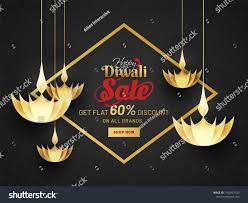
Why would they be hesitant about buying your product in a traditional setting?
4. Identify which products to sample. Decide on the product you want to get in front of them. Decide what you’re going to promote and the form it’ll take when you give it out.
Will you give out a whole product, a mini version or a small portion?
Will it be consumed there and then, or will the customer take it home to use?

This will also drive budget: if you’re a food brand sampling in a retail store, on-the-spot trial should be your primary objective.
5. Identify how you’ll sample them. Consider the overall sampling experience beyond the product. You could do something basic or opt for something more experiential – perhaps by working with an external agency. There’s an extensive list of sampling techniques here. Land upon your chosen method, where you’ll do it and for how long.
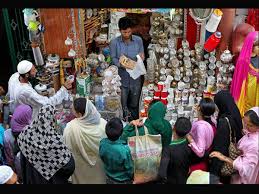
6. Set up a feedback system. As part of a broader consideration of customer next steps, think about how you can make it easy for people to tell you (and the world) what they think of your product.
You could include a QR code, choose a hashtag so they can get involved on social media, or create an in-person questionnaire or website form. You can also require your staff or brand ambassadors to provide a report with feedback noting examples of questions asked or the most popular flavor.
7. Manage the logistics – and who’ll do what. Translate your plans into action. That could be contacting appropriate venues or businesses, booking slots, ordering and sending over products, signing contracts, assembling a team to run the sampling, and so on.
If you won’t be in charge of the sampling yourself, working with brand ambassadors is a good idea. Read our guide to finding the best ones here.

8. Create supporting materials. If you’re running a direct sampling campaign, consider ordering some promotional material, like a banner or some business cards. You may also want to invest in advertising content and build out a social media plan with key messaging planned for the few days prior and during.
9. Run the campaign. With all preparations in place, get moving. Stay mindful of your stock levels and be sure to record sales. If you’re in a retail venue, make sure you know where sales have been for a period before, so you can properly see the impact that sampling has had.
10. Measure results and implement feedback. Once the campaign is over, gather your thoughts and findings, cross-referencing them with your goals. Discuss what went well and what went badly with your team and incorporate the key takeaways into your product or business strategy going forward. Track everything – don’t skip the post-analysis stage.
Key takeaways
• You can sample your products with or without face-to-face customer interaction. If you’re going for a direct approach, location and staff capability are super important.
• Product sampling comes at a price, so it’s important that you have a system in place to track the right metrics to work out whether it was worth the expense.
• As with any marketing effort, tailor your sampling – in terms of what you offer and how you offer it – to the group you’re trying to reach.
Learn more
Perspective. From brand experience agency Elevate, here are five things to in a product sampling program.
Example. See how pea-based snack brand Yushoi gave out free packets to commuters fitting the ‘adult snacker’ demographic.
Tool. Sampling platform Peekage goes into the process and metrics needed to measure the impact of your sampling campaign.
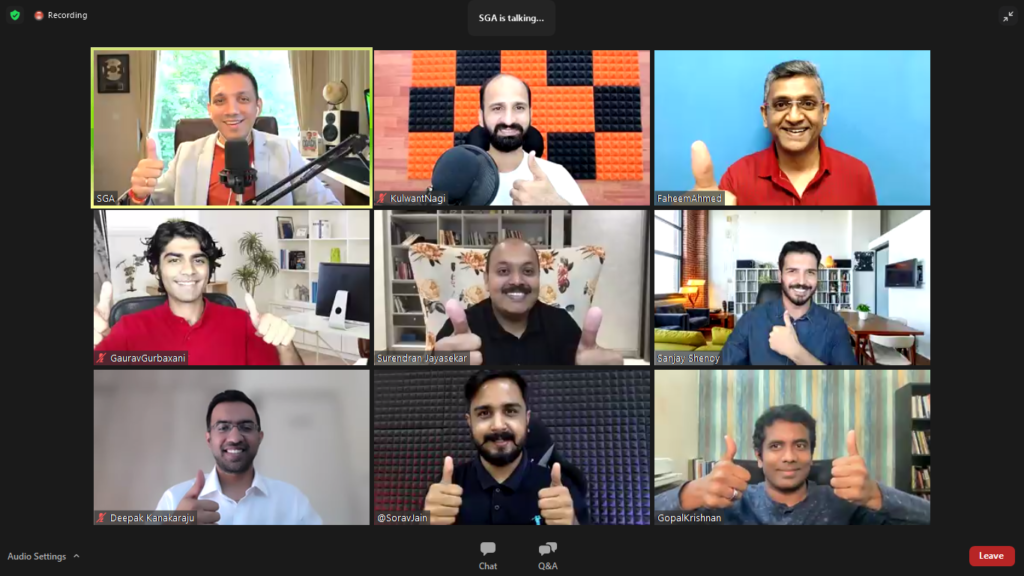
Digital sampling
Product sampling isn’t limited to physical retail. Ecommerce brands can incentivize online shoppers by providing a sampler pack for free with any online purchase. A handful of sample-size products can encourage repeat buyers to try something new next time.
But sometimes, the biggest challenge of buying online is the fact you can’t touch or interact with the item before buying it. It’s one of the reasons why ecommerce return rates are 11% higher than products bought in-store.
Get a sample product into the hands of a potential online customer, too—even if you can’t shrink your product—by giving the full-size product away as a sample for a limited time.
Digital Deepak company allows potential customers to select different formats to physically try on at home.
Each customer has days to try on, test them out.

It’s a great way to allow online shoppers to “sample” what you offer via your online store.
However, you need to work this into your overall business model to make it feasible and cost-effective—especially if customers fail to return the samples.
If you don’t want to bother with the logistics or the potential costs to your company, consider how you can make a sample of your initial offer to a potential customer.
Some brands offer 25% off your first order, free shipping, or small products tossed into an order as a free gift.
Establish clear goals
Regardless of what you’re offering and how, you need a plan for the product samples you want to offer.
Consider the following before offering your inventory up for customers without rhyme or reason:
- What is the purpose of offering free samples?
- What do you hope to achieve?
- Knowing this will help inform decisions around what to offer, when, and how long.
- Who do you want to try your product?
![Digital Deepak Free Courses in 2021 [ Secret Links Inside ]](https://freeclusters.com/wp-content/uploads/2021/02/digital-deepak-free-online-courses.png)
- The answer will help you understand what you need to do to make sure the product gets to the right shoppers. (Perhaps you want to introduce your product to athletes; in this case, sponsoring a 5k race and handing out your product at the finish line might be appropriate.)
- How will you measure success? You need a way to track your product sample campaigns and whether or not they helped drive business.
- That means thinking strategically (and avoiding a shotgun approach to free samples).
Be mindful of timing
When offering product samples, timing is everything. Make sure you’re giving people enough time to see the benefits of it first-hand.
For the reminders you send to product samples that encourage them to purchase the full-size item, leave it too long and repurchasing the item will no longer be top of mind.
You might have to convince them to buy the full-priced version (or take another free sample) to remind them of how great it was.
Similarly, push for the sale too quickly and you risk bombarding potential customers with marketing messages before they’ve had a chance to experience the product themselves.
Look at your sales data to see the average time period between taking a free sample and buying the full-priced version.
If you’re offering a sample size of your essential oils, for example, you might find that people repurchase two weeks later when they’ve run out.
A few days before that two-week trial period is the perfect time to send a purchase reminder.
Be strategic about sampling location
The layout of your retail store has a major impact on the way shoppers interact with your free samples.

Avoid the back of your store or places where very few shoppers visit.
Instead, position your sampling station in a place that’s visible to in-store shoppers and passersby, such as:
- By the entrance, to attract people as they first enter the store.
- In the window, to encourage passersby to drop in and claim a free sample, even if they didn’t intend on visiting.
- At the checkout desk, to nudge those making a purchase to take a free sample of another item they’ll later return to buy.
If you’re operating a larger store, take a page from Costco’s book and have sampling stations dotted around the most popular routes. A station at the halfway point of their shopping route could entertain shoppers mid-shop.
Leverage social media
Anything we get for free is a bonus—a value add you didn’t expect but appreciate. When we’re positively surprised, we’re more inclined to share our appreciation with friends.
Despite this natural inclination, make it obvious that you’d appreciate a positive tweet or Instagram Story in exchange for your free product. (This goes back to the reciprocity we mentioned earlier.)
You’ll raise brand awareness, build trust with new audiences via an endorsement from someone they trust, and convince them to take a free sample, since there’s nothing to lose. Talk about getting your foot in the door with new customers.
Solicit feedback
Even if you don’t turn samplers into paying customers, offering free samples is a superb way to gather feedback from those who’ve tried a miniature version of your product.
A few days after your reminder email, send a follow-up email asking why they didn’t purchase the full-size item. Whether it was too expensive, they didn’t see results, or they haven’t had time to pick-up the item in-store, knowing this can help you fine-tune your product sampling campaigns going forward.
Common product sampling mistakes
You’re convinced: you want to use samples to attract new customers, introduce different audiences to your product, and entice existing shoppers to buy more. But before you allow your customers to sample everything in the store, know that offering too much can backfire.
Offering too many samples
When people are faced with just one or a handful of choices, making a selection feels manageable. If you’re not forcing customers to choose, but allowing them to sample multiple products, a small selection feels reasonable and comfortable.
But when you start adding in more and more choices, our ability to simply pick one declines. Eventually, we reach a point where we make no decision at all because of our inability to handle how overwhelmed we feel by all the choices. It’s a psychological phenomenon called the paradox of choice.
Stick to offering one sample or predetermined selection. Removing the obstacle of too much choice will make customers more likely to take you up on the offer—and purchase the full-price item when they realize how good it is.
Not including a clear next step
Think of your free product samples as the first step of the purchase process. People receive the free sample, enjoy it, and want to purchase the full-price version. But when they run out of the free sample, reordering falls to the bottom of their priority list.
A cardinal sin of product sampling is forgetting to include a next step for samplers and leaving the decision of whether they visit your website and purchase the full price version in their hands.
Remove this opportunity from your strategy by entering all product samplers into an email marketing sequence. If you’re offering toothpaste samples, for example, give shoppers seven days to try the product. Once those seven days are up, send an email reminding them to purchase the full-size version.
Only offering in-person samples
We’ve touched on the fact that product samples don’t have to be limited to brick-and-mortar stores. Ecommerce businesses can offer free samples to shoppers, helping them overcome a major challenge of buying online: not being able to interact with the product before paying full price for it.
At worst, online shoppers try the product by purchasing it and later returning it. The 30-day money-back guarantee many brands offer incentivizes this shopping habit, making ecommerce returns a huge logistical (and financial) nightmare for retailers.
However, offering free product samples mitigates this behavior. Online shoppers are incentivized to make an order if they can test other products for free. Plus, return rates on those previously sampled products are much lower. The shopper already knows the product they’re about to buy is the right one for them.
Not considering the cost impact
Free product giveaways come at a cost. When deciding whether to offer product samples to your customers, consider the price of the actual sample and any logistical fees you’ll pay to deliver it—such as posting (or returns if you’re following Warby Parker’s try-at-home method.)
Kenko Tea is a Japanese matcha tea brand that offers 30 gram sample bags to its wholesale customers. Director Sam Speller says one of its biggest product sampling mistakes was “not getting products in a smaller sample size that you can give out in a cost effective manner.
“For years, we only offered our wholesale offering with fairly strict minimum orders and didn’t have smaller sample sizes. I think this was a mistake.”
For this reason, Sam recommends, “When working with your suppliers for consumable products, see if you can get smaller sample sizes for your existing products so you can give out samples more freely to keep expenses down.”
Product sampling ideas
A successful product sampling strategy has many moving parts. But sometimes, a free version of a product isn’t as big of a deal for potential customers—especially if the full-sized version is affordable. For some shoppers, there’s not much sense in taking a free sample if they can spend $2.99 for a bigger version.
If that’s the case for products being sold in your store, here are three bonus product sampling ideas to convince shoppers to take a free sample.
Include sampling in loyalty programs
Earlier, we mentioned that product samples have a domino effect on customer loyalty. Those repeat customers are sources of consistent revenue for many retailers. So, why not take that one step further and use small samples as an incentive to join a loyalty program?
Some direct-to-consumer brands base their entire business model on this strategy. Monthly subscription boxes by Birchbox and Glossybox contain free miniature versions of popular beauty products. The contents of each box changes monthly so customers are incentivized to keep their subscription.
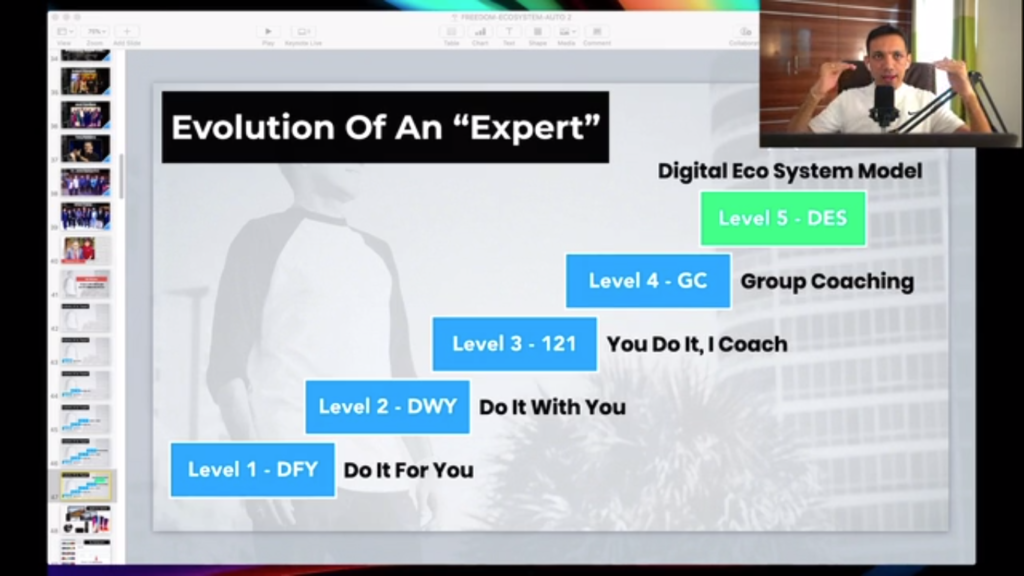
Have a webinar give free tips amd tricks to anyone who attends as a product sample.
Not only do you support the digital community by driving your soon-to-be-customers to connect again, you get to reach a new audience with similar interests and motivations as your target market.
Leverage product sampling for customer reviews
How much more likely are you to purchase a product that someone unbiased can vouch for? Chances are, your answer is “very likely.”
The vast majority (90%) of consumers read online reviews before visiting a retail store. However, collecting those reviews is hard for retailers. Many forget to ask for them altogether.
Treat product samples as a way to collect those customer reviews easily. It appeals to reciprocity: the idea that if you offer a free sample of your product to someone, they’re likely to do something in return—such as writing a mail.

Start offering free samples at your store
Now that you’ve seen some examples of free samples in action, you can make choices about whether this marketing strategy is right for your business.
Remember to match the product samples with items previously purchased, position the sampling station in a high-traffic area of your store, and schedule reminders for customers to purchase the full-sized (and full-priced) versions once the sample runs out.
Unify your sales channels with Shopify
Bring your in-store and online sales together with Shopify POS. Gain insights about your business from a single back office so you can work smarter, move faster, and think bigger.
Tail Piece:
Fmcg Company will search for Brand Loyalty. It will Continue…

